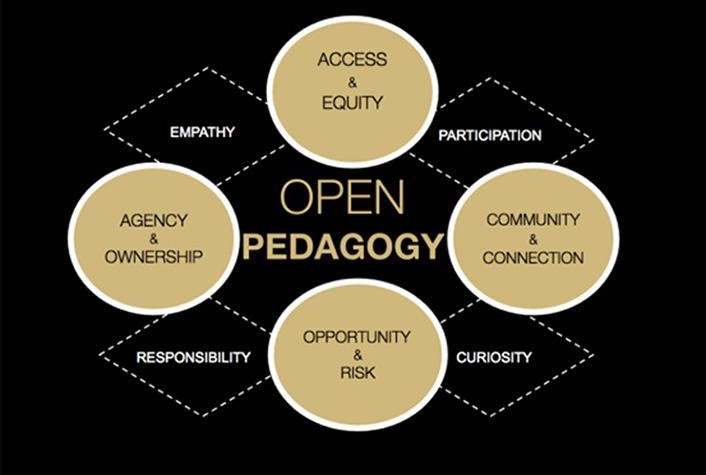What is Open Pedagogy?
While traditional pedagogy engages students as the consumers of information, Open Pedagogy engages students as creators of information. Students create openly licensed products that go beyond the classroom and impact the community. Open Pedagogy is a high-impact practice empowering students to engage in creating information through renewable assignments.
Check out the Capetown Open Education Declaration & The Open Pedagogy Notebook
Aspects of Open Pedagogy
- Communities (not just content
- Learner-driven education (not just assignments)
- Access (not just textbooks)
- Public contexts (not just preparation)
Taken from “Free + Freedom: The Role of Open Pedagogy in the Open Education Movement” by Rajiv Jhangiani and Robin DeRosa
Some experiences from Kwantlen Polytechnic University faculty
Other Resources
Attributes of open pedagogy: A model for using open educational resources
Bronwyn Hegarty presents eight attributes of open pedagogy grounded in openness and Open Educational Practice (OEP), establishing a rationale for how these approaches benefit both learners and teachers while fostering creative communities in the OEPosphere.
Open Pedagogy Notebook
Developed by Rajiv Jhangiani and Robin DeRosa. Designed as a collaborative space for individuals to share their work in open pedagogy — assignments, approaches, syllabi, and other examples of open practices.
Principles of Good Teaching and Learning and the Role Open Pedagogy Can Play
Article by Michael Mills and Shinta Hernandez in Education Technology Insights that outlines how open pedagogy can help demonstrate good teaching and learning.
Tools to Promote Open Pedagogy in the Classroom
30-page toolkit by Michael D. Aldridge that introduces open pedagogy, explains 16 distinct teaching methods that promote open pedagogy, and includes additional resources as well as next steps to developing an open pedagogy teaching philosophy. (CC BY 4.0)
